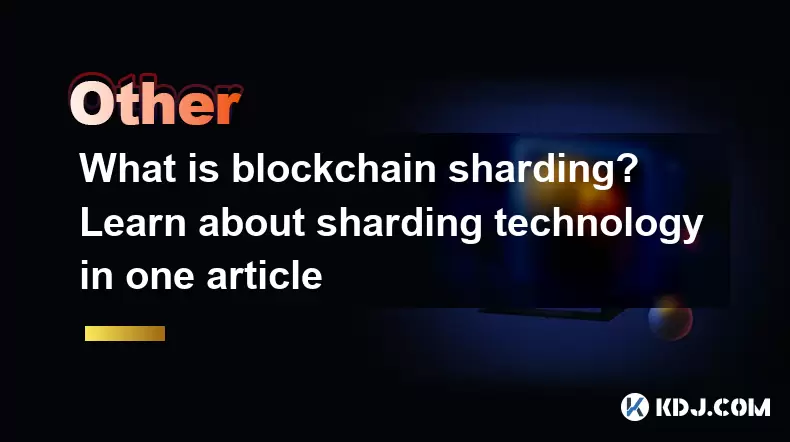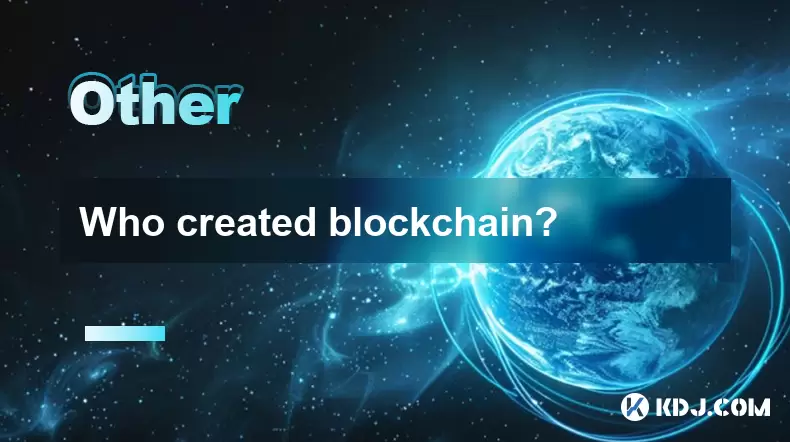-
 Bitcoin
Bitcoin $115200
-2.68% -
 Ethereum
Ethereum $3601
-5.16% -
 XRP
XRP $3.035
-2.96% -
 Tether USDt
Tether USDt $0.9997
-0.04% -
 BNB
BNB $764.5
-5.43% -
 Solana
Solana $168.1
-5.92% -
 USDC
USDC $0.9998
-0.02% -
 Dogecoin
Dogecoin $0.2090
-4.80% -
 TRON
TRON $0.3272
-0.49% -
 Cardano
Cardano $0.7306
-5.00% -
 Hyperliquid
Hyperliquid $39.16
-12.22% -
 Stellar
Stellar $0.3967
-4.96% -
 Sui
Sui $3.566
-5.95% -
 Chainlink
Chainlink $16.55
-6.57% -
 Bitcoin Cash
Bitcoin Cash $552.3
-3.90% -
 Hedera
Hedera $0.2516
-4.69% -
 Avalanche
Avalanche $21.99
-5.75% -
 Toncoin
Toncoin $3.621
-0.28% -
 Ethena USDe
Ethena USDe $1.000
-0.03% -
 UNUS SED LEO
UNUS SED LEO $8.951
0.02% -
 Litecoin
Litecoin $105.9
-3.59% -
 Shiba Inu
Shiba Inu $0.00001232
-5.00% -
 Polkadot
Polkadot $3.640
-5.55% -
 Uniswap
Uniswap $9.048
-7.03% -
 Monero
Monero $301.8
-1.51% -
 Dai
Dai $0.9999
-0.01% -
 Bitget Token
Bitget Token $4.334
-3.66% -
 Pepe
Pepe $0.00001064
-6.17% -
 Cronos
Cronos $0.1367
-5.78% -
 Aave
Aave $259.2
-4.59%
What is blockchain sharding? Learn about sharding technology in one article
Blockchain sharding enhances network efficiency by dividing it into shards that process transactions independently, boosting scalability and throughput.
May 26, 2025 at 03:50 pm

Blockchain sharding is a scalability solution designed to enhance the performance and efficiency of blockchain networks. As the demand for blockchain technology grows, the need for networks to handle more transactions per second (TPS) becomes increasingly critical. Sharding addresses this by partitioning a blockchain's network into smaller, more manageable pieces called shards. Each shard contains its own subset of data and processes transactions independently, which can significantly increase the overall throughput of the network.
How Does Sharding Work in Blockchain?
Sharding operates by dividing the blockchain network into several smaller components or shards. Each shard is responsible for processing a subset of the network's total transactions. This division of labor allows the network to process multiple transactions simultaneously, rather than sequentially, which is the case in traditional blockchain setups like Bitcoin and Ethereum (prior to Ethereum 2.0).
In a sharded blockchain, each node in the network is assigned to one or more shards. These nodes maintain the state and transaction history of their assigned shard. When a user initiates a transaction, it is directed to the appropriate shard based on predefined rules, such as the transaction's sender or recipient address. Once the transaction is processed within the shard, it is validated and added to the shard's ledger.
Benefits of Blockchain Sharding
One of the primary benefits of blockchain sharding is its ability to improve scalability. By allowing multiple transactions to be processed concurrently across different shards, the overall transaction throughput of the network can be significantly increased. This scalability enhancement is crucial for blockchain networks aiming to support widespread adoption and handle large volumes of transactions.
Another advantage of sharding is that it can reduce the computational and storage requirements for individual nodes. Since each node only needs to maintain the state of its assigned shard, rather than the entire blockchain, the resource demands on each node are considerably lower. This can make it easier for more users to participate in the network as validators or full nodes.
Additionally, sharding can improve the network's resilience and fault tolerance. If one shard experiences issues or goes offline, the other shards can continue to operate independently, ensuring that the overall network remains functional. This distributed nature of sharding can enhance the robustness of the blockchain network.
Challenges and Considerations of Sharding
Despite its benefits, sharding also presents several challenges and considerations that must be addressed. One significant challenge is ensuring the security of the network. With the blockchain divided into multiple shards, there is a risk that an attacker could target a single shard to compromise the entire network. To mitigate this, sharding protocols often include mechanisms such as cross-shard communication and validation to ensure the integrity of transactions across the network.
Another consideration is the complexity of implementing and managing a sharded blockchain. Coordinating the activities of multiple shards requires sophisticated protocols and consensus mechanisms. Ensuring that all shards remain synchronized and that transactions are processed correctly across the network can be a complex task, requiring significant development and testing efforts.
Furthermore, sharding can introduce new attack vectors and vulnerabilities that need to be carefully managed. For example, the risk of shard takeovers, where an attacker gains control of a majority of nodes in a single shard, must be addressed through robust security measures and governance structures.
Examples of Sharding in Blockchain Projects
Several blockchain projects have implemented or are exploring sharding as a scalability solution. One notable example is Ethereum 2.0, which aims to transition from a proof-of-work (PoW) to a proof-of-stake (PoS) consensus mechanism and incorporate sharding to significantly increase its transaction throughput.
In Ethereum 2.0, the network is divided into 64 shards, each capable of processing its own set of transactions and smart contracts. This sharding approach is designed to enable Ethereum to handle thousands of transactions per second, a substantial improvement over its current capacity.
Another project that has implemented sharding is Zilliqa. Zilliqa uses a sharding protocol to divide its network into smaller groups of nodes, known as shards, which process transactions in parallel. This allows Zilliqa to achieve high transaction throughput and scalability, making it suitable for applications requiring fast and efficient transaction processing.
How to Implement Sharding in a Blockchain Network
Implementing sharding in a blockchain network involves several key steps and considerations. Here is a detailed guide on how to approach sharding implementation:
Define the Sharding Strategy: Determine how the network will be divided into shards. This could be based on transaction types, user addresses, or other criteria. The strategy should be designed to maximize efficiency and scalability while maintaining security.
Develop Sharding Protocols: Create the necessary protocols for managing shards, including how transactions are assigned to shards, how shards communicate with each other, and how consensus is achieved within and across shards.
Implement Cross-Shard Communication: Design mechanisms for transactions that span multiple shards. This could involve creating temporary bridges between shards or using a main chain to facilitate cross-shard transactions.
Ensure Security and Validation: Implement robust security measures to protect individual shards and the network as a whole. This may include cryptographic techniques, validation processes, and monitoring systems to detect and prevent attacks.
Test and Iterate: Thoroughly test the sharding implementation in a controlled environment to identify and resolve any issues. Iterate on the design and protocols based on test results to ensure optimal performance and security.
Deploy and Monitor: Once the sharding implementation is ready, deploy it on the live network and continuously monitor its performance. Adjust and optimize the system as needed to maintain efficiency and security.
Frequently Asked Questions
Q: How does sharding affect the decentralization of a blockchain network?
A: Sharding can impact decentralization in both positive and negative ways. On one hand, by reducing the resource requirements for nodes, more users can participate in the network, potentially increasing decentralization. On the other hand, if the sharding implementation is complex and requires specialized hardware or expertise, it could lead to centralization among a smaller group of capable participants.
Q: Can sharding be applied to all types of blockchain networks?
A: Sharding is more suitable for certain types of blockchain networks, particularly those that require high transaction throughput and scalability. Networks with simpler use cases and lower transaction volumes may not benefit as much from sharding, and the added complexity might outweigh the advantages.
Q: What are the main differences between sharding and other scalability solutions like layer 2 scaling?
A: Sharding is a layer 1 scaling solution that modifies the underlying blockchain architecture to improve scalability. In contrast, layer 2 scaling solutions, such as sidechains and state channels, operate on top of the existing blockchain and do not alter its core structure. Sharding can potentially offer higher scalability but is more complex to implement and maintain compared to layer 2 solutions.
Q: How does sharding impact the finality of transactions in a blockchain network?
A: Sharding can affect the finality of transactions, as transactions processed within different shards may need to be reconciled and validated across the network. This could introduce additional delays in achieving finality compared to non-sharded networks. However, well-designed sharding protocols can mitigate these delays and ensure efficient transaction finality.
Disclaimer:info@kdj.com
The information provided is not trading advice. kdj.com does not assume any responsibility for any investments made based on the information provided in this article. Cryptocurrencies are highly volatile and it is highly recommended that you invest with caution after thorough research!
If you believe that the content used on this website infringes your copyright, please contact us immediately (info@kdj.com) and we will delete it promptly.
- Cardano Price, Pi Network, and Crypto Presales: What's the Buzz?
- 2025-08-02 08:50:12
- XRP Fund Success: Teucrium CEO Reveals Trillions on the Horizon
- 2025-08-02 09:10:12
- Challenge Coins: More Than Just Collectibles – A Military Tradition
- 2025-08-02 08:30:12
- Under the Radar: Hunting for 100x Crypto Gems in a Pi Network World
- 2025-08-02 08:30:12
- Bitcoin, Solana, and Altcoin Season: What's Hot and What's Not?
- 2025-08-02 07:10:12
- Toncoin, Rollblock, and the Token Offering Landscape: A New York Minute
- 2025-08-02 07:10:12
Related knowledge

What is the difference between a blockchain and a database?
Aug 01,2025 at 09:36pm
Understanding the Core Structure of a BlockchainA blockchain is a decentralized digital ledger that records data in a series of immutable blocks linke...

What is a hash in a blockchain?
Aug 02,2025 at 05:28am
Understanding the Concept of Hash in BlockchainA hash in the context of blockchain technology refers to a unique digital fingerprint generated by a cr...

What is a hash in a blockchain?
Aug 02,2025 at 04:43am
Understanding the Concept of Hash in BlockchainA hash in the context of blockchain technology refers to a unique digital fingerprint generated by a cr...

Who created blockchain?
Aug 02,2025 at 05:15am
What Is Blockchain and Why Does Its Origin Matter?Understanding who created blockchain begins with recognizing what blockchain actually is. Blockchain...

How to start a business using blockchain?
Jul 28,2025 at 12:36am
Understanding the Basics of Blockchain TechnologyBefore diving into the process of starting a business using blockchain, it's crucial to understand wh...

What is a token on the blockchain?
Jul 21,2025 at 07:00am
Understanding the Concept of a TokenIn the realm of blockchain technology, a token is a digital representation of an asset or utility that exists on a...

What is the difference between a blockchain and a database?
Aug 01,2025 at 09:36pm
Understanding the Core Structure of a BlockchainA blockchain is a decentralized digital ledger that records data in a series of immutable blocks linke...

What is a hash in a blockchain?
Aug 02,2025 at 05:28am
Understanding the Concept of Hash in BlockchainA hash in the context of blockchain technology refers to a unique digital fingerprint generated by a cr...

What is a hash in a blockchain?
Aug 02,2025 at 04:43am
Understanding the Concept of Hash in BlockchainA hash in the context of blockchain technology refers to a unique digital fingerprint generated by a cr...

Who created blockchain?
Aug 02,2025 at 05:15am
What Is Blockchain and Why Does Its Origin Matter?Understanding who created blockchain begins with recognizing what blockchain actually is. Blockchain...

How to start a business using blockchain?
Jul 28,2025 at 12:36am
Understanding the Basics of Blockchain TechnologyBefore diving into the process of starting a business using blockchain, it's crucial to understand wh...

What is a token on the blockchain?
Jul 21,2025 at 07:00am
Understanding the Concept of a TokenIn the realm of blockchain technology, a token is a digital representation of an asset or utility that exists on a...
See all articles

























































































